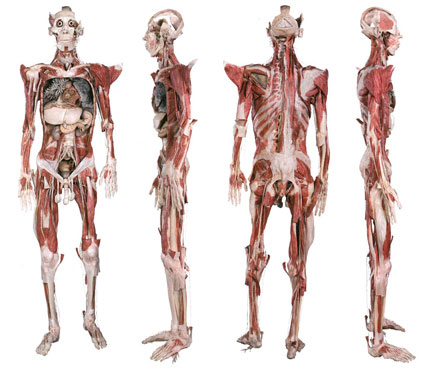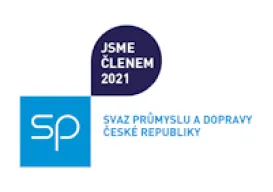Real Anatomy - Plastination
For the most impressive experiences when learning anatomy, we present Dr. von Hagens' plastinations, inventor of plastination method with forty years experience in the field...
About Plastination

Plastination is a process used in anatomy to preserve bodies or body parts, first invented by Dr. Gunther von Hagens in 1977.
Nowadays manufactured samples are a common part of a very experienced team, supervised by Dr. Hagens.
Revolution in the teaching of anatomy
An innovative method of preservation of real tissues by plastination brought significant improvement of anatomical research and teaching through visual and tactile, and realism.
Using these authentic human specimens provides a unique alternative to the traditional plastic models and "wet" samples.
Practical anatomy
The mission of von Hagens plastinates is to allow the teaching of anatomy gaining unique experiences using authentic samples from the human body. For students, teachers, doctors, scientists and health professionals. Offered choice of learning samples include silicone plastinates, sheet plastinations (cuts) and view of vascular structures. It is also possible adaptation of the samples to the specific requirements of educational institutions, universities, museums and science centers.
Ethics
All anatomical specimens come from the bodies of donors who donated their bodies with official permission for the time of your life, for the purpose of educating the next generation. For almost 35 years, this donation program is ethical backbone of the plastination.
The Administrator of this donor program is an institute of plastination in Heidelberg, which was founded in 1993. Currently the program is situated more than 13.000 donors from more than thirty countries. However prevail donors from Germany (about 85%) and North America (10%). Application to the program is not an obligation, but only intend declaration, which can be canceled at any time.
Plastinated human samples can only be used for scientific and educational purposes.
To obtain additional information please do not hesitate to ask us for free despatch of complete catalog.
Plastinates are divided into the following categories:

Silicone plastinates
- Whole body specimens
- Head specimens
- Torso specimens
- Upper extrmities
- Lower extremities
- Pelvis specimens
- Joint specimens
- Organs systems
- Nervous system
- Blood circulation
- Respiration system
- Digestive system
- Reproduktive organs
Blood vessel configurations
Skeletons and skulls
 Sheet plastination (cuts)*
Sheet plastination (cuts)*
- Head slice
- Trunk slice
- Pelvis
- Whole bodies
- Upper extremity
- Lower extremity
Anatomy Glass**
- Whole body slice
- Head and neck
- Thorax
- Abdomen
- Pelvis
- Upper extremity
- Lower extremity
Note:
*Sheet Plastinates are 1 - 5 milimeter thick plastinated body slices from real human bodies. In comparison to well-known diagnostic pictures of computer tomography and magnetic resonance tomography, sheet plastinates illustrate anatomical structures in color.
**Anatomy Glasses are reproductions of the most interesting sheet plastination cuts, transmitted in high resolution on Plexiglas, designed for projection. Anatomy Glass is available for the general public, since it does not violate the sales restrictions of genuine human preparation.
Default Alphabetically Lowest price Highest price
Default Alphabetically Lowest price Highest price



